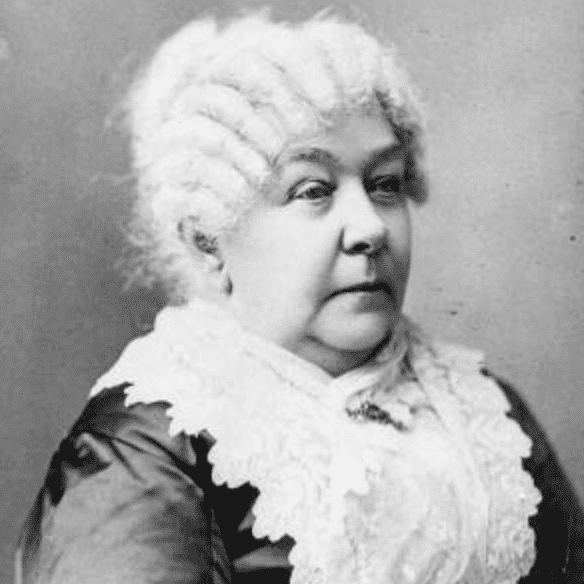Elizabeth Cady Stanton’s awareness of women’s issues began when she was just a girl. Reading her father’s law books, she realized that men and women were treated differently under the law. Her father would not let her tear the offending pages out of his law books, but he did explain how laws could be changed.
Before Stanton worked for women’s rights, she married a proselytizer for the freedom of slaves and took up the cause of abolition. Her path veered, however, when she accompanied her husband to an Anti-Slavery Convention in London and discovered that women could not be seated as delegates but must sit in the visitors’ gallery.
Women’s Rights Convention
With Lucretia Mott she organized a women’s rights convention in Seneca Falls in 1848. She wrote a Declaration of Independence modeled on that of the founding fathers. “We hold these truths to be self-evident; that all men and women are created equal.” As the convention debated about what should be included in the declaration, it was Stanton who insisted that the right to vote must be one of their demands.
Stanton was always a bit ahead of her sisters in suffrage. When she married she dropped the word “obey” from the wedding vows. She wanted to fight for changing divorce laws that would protect women and to provide equitable wages for women and argued that women should serve on juries and be able to withhold sex from their husbands. She was successful in winning property rights for women after marriage, rights to shared guardianship of children, and better divorce laws. When she wrote The Woman’s Bible in which she accused organized religion of contributing to the subjugation of women, much of the women’s movement disowned her.
In 1866 Stanton ran for the House of Representatives. After researching the situation, she determined there was nothing to prohibit her running, even if women could not vote. Stanton received 24 votes out of the approximately 22,000 cast.
Right to Vote
Stanton worked closely with Susan B. Anthony, writing most of Anthony’s speeches. In 1878 when an amendment to the constitution permitting the vote for women was introduced in the Senate, it was Stanton who spoke to the gentlemen gathered in the Senate Hall. The Senators enraged her by reading newspapers and smoking while she spoke.
Every year after that, from 1878 to 1919, a new suffrage bill was introduced in the Senate—until it finally passed. Stanton lived to the age of 86 years, not long enough to see the crowning jewel of her efforts achieved.

